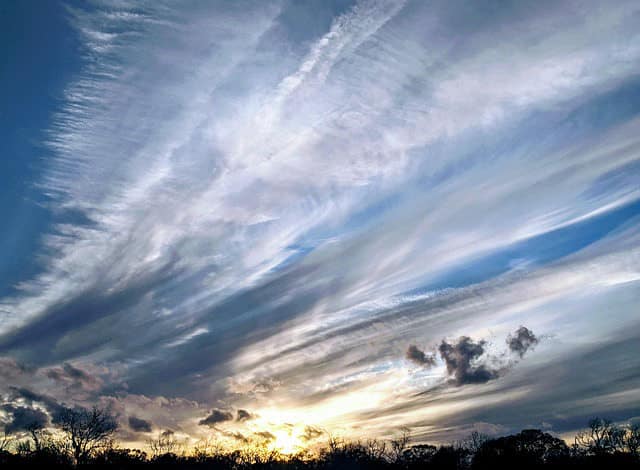**EPA Releases Comprehensive Information on Chemtrails, Contrails, and Geoengineering**
The Environmental Protection Agency (EPA) is making available all their current knowledge on chemtrails, contrails, and geoengineering, continuing their research into these topics. According to the EPA, contrails—or condensation trails—from aircraft generally do not release dangerous chemicals unless used for specific purposes such as agriculture or firefighting. Furthermore, the EPA states there is no evidence that contrails are intentionally formed as part of geoengineering or weather modification efforts.
While chemtrails are monitored and regulated when used legitimately, geoengineering activities currently lack sufficient oversight, presenting potential risks. The EPA also notes concerns about amateurs and private entities experimenting with interventions in the ozone layer and clouds without fully understanding the possible consequences. The European Union has expressed apprehension about contrail impacts in the future, and more information can be found through their resources.
—
### EPA Administrator Lee Zeldin’s Statement
“Americans have legitimate questions about contrails and geoengineering, and they deserve straight answers,” said EPA Administrator Lee Zeldin. “We’re publishing everything EPA knows about these topics on these websites.”
The EPA has launched a new online resource explaining the science behind contrails, addressing longstanding myths and misconceptions. The webpage also directly tackles claims that these trails are intentional releases of harmful chemicals or biological agents for nefarious purposes, including population control, mind control, or weather modification.
In addition, the EPA has created a dedicated resource focusing on solar geoengineering—techniques aimed at cooling the Earth by reflecting sunlight back into space, typically by injecting gases like sulfur dioxide into the upper atmosphere to form reflective particles.
—
### Concerns About Geoengineering
“EPA shares the significant reservations many Americans have when it comes to geoengineering activities,” added Administrator Zeldin.
The resource explores current scientific research on geoengineering and potential environmental and human health impacts. These include:
– **Ozone Layer Depletion:** Particles added to the stratosphere could deplete the ozone layer.
– **Environmental Effects:** Sulfur addition may increase acid rain and soil acidity, harming crops and ecosystems.
– **Weather Changes:** Altered rainfall and drought patterns may result from changes in hydrological cycles.
– **Health Risks:** Some particles may descend to ground level, potentially causing respiratory issues.
The EPA’s online materials also detail efforts to monitor private actors possibly engaging in geoengineering. Additionally, they cover weather modification and cloud seeding, alongside relevant federal and state government actions.
—
### Understanding Geoengineering
Geoengineering encompasses a wide range of activities designed to either cool the Earth or remove greenhouse gases—such as carbon dioxide, methane, and nitrous oxide—from the atmosphere.
Examples include:
– **Carbon Dioxide Removal (CDR):** Techniques like direct air capture and ocean fertilization.
– **Solar Geoengineering or Solar Radiation Modification (SRM):** Methods that increase Earth’s reflectivity to reduce warming.
Common solar geoengineering techniques include:
– **Stratospheric Aerosol Injection (SAI):** Introducing small reflective particles, such as sulfur dioxide, into the stratosphere to reflect sunlight.
– **Marine Cloud Brightening (MCB):** Adding sea spray particles to brighten clouds over oceans.
– **Other Approaches:** Techniques like Cirrus Cloud Thinning and space-based methods have been less explored due to technological challenges and costs.
—
### Potential Impacts of Solar Geoengineering
While the goal is to reduce global temperatures by reflecting sunlight, these technologies carry risks that require careful evaluation:
– **Ozone Layer:** Injection of aerosols may harm the ozone layer, though reduced ground-level ozone from lower sunlight might reduce some health risks.
– **Crop and Ecosystem Health:** Increased acid rain and decreased sunlight could negatively affect agriculture and natural ecosystems.
– **Hydrological Cycle:** Changes in precipitation patterns might cause droughts or floods in certain regions.
– **Human Health:** Particles descending to Earth can impact respiratory health.
Overall, scientific understanding of these consequences remains limited due to uncertainties in observations and modeling.
—
### What Are “Chemtrails”?
The term “chemtrails,” short for “chemical trails,” is used by some to describe conspiracy theories alleging that contrails from routine air traffic are actually intentional releases of harmful chemicals or biological agents for sinister objectives like population or mind control, or geoengineering.
The EPA clarifies that chemicals are sometimes sprayed intentionally from aircraft for legitimate, documented purposes such as firefighting or agriculture. These activities involve low-flying propeller aircraft—not the high-altitude jets that produce contrails—and are strictly regulated.
The EPA actively collaborates with federal agencies to monitor air traffic and ensure no dangerous or illicit activities occur.
—
### Are Contrails Related to Geoengineering or Weather Modification?
The federal government has no record or knowledge of contrails being intentionally created over the United States for geoengineering or weather modification purposes.
—
### Access EPA’s Resources
For more detailed information, visit the EPA’s newly launched online resources covering:
– Geoengineering activities and their potential impacts
– Scientific explanations of contrails and debunking of chemtrail myths
The EPA remains committed to transparency and public education on these important issues.
https://www.independentsentinel.com/whats-going-on-in-the-sky-chemtrails-geoengineering/

Be First to Comment